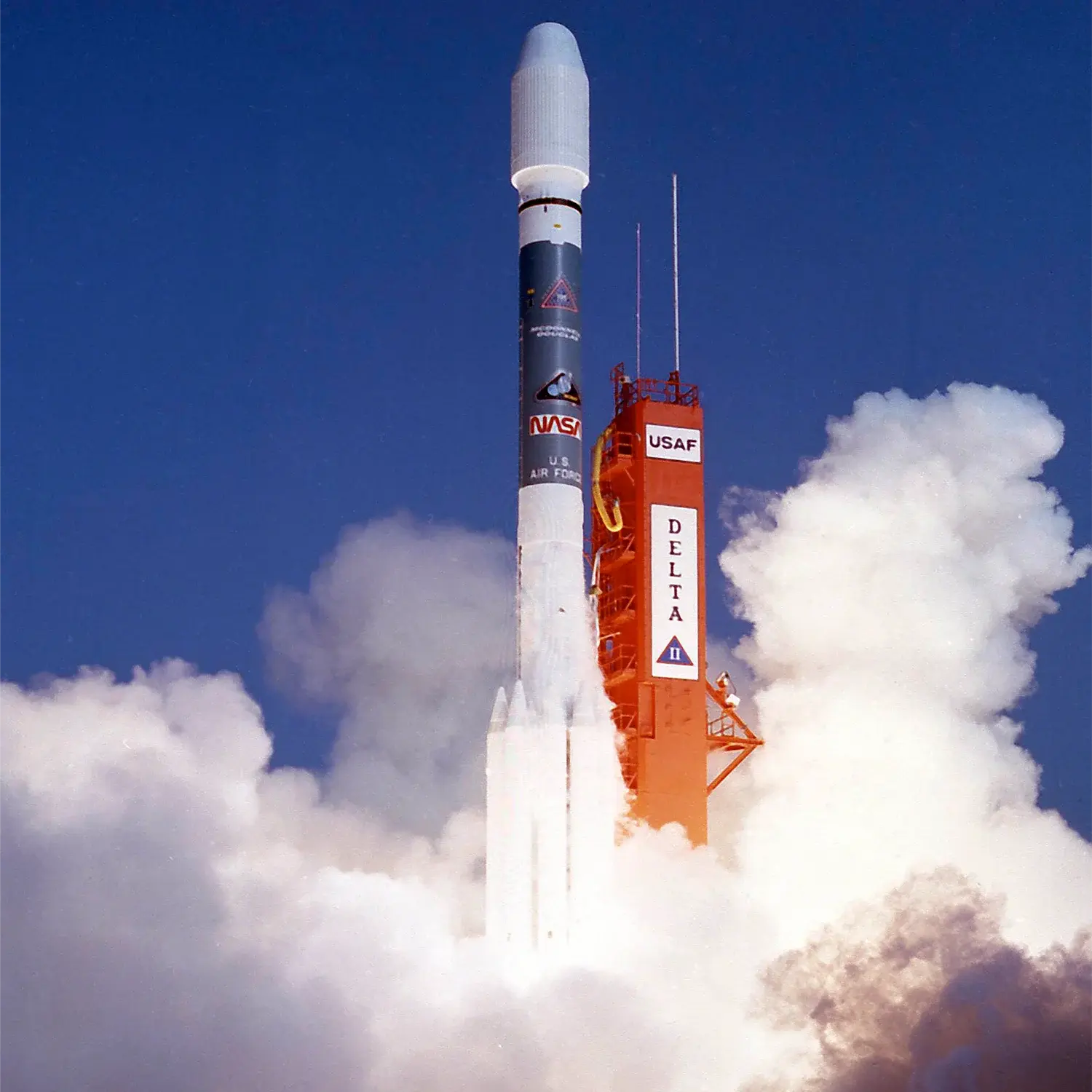ROSAT
Launch Success
Liftoff Time (GMT)
21:48:00
Friday June 1, 1990
Watch Replay
24/7 Coverage
Mission Details
Launch Notes
ROSAT was a German Aerospace Center-led satellite X-ray telescope, with instruments built by West Germany, the United Kingdom, and the United States.
ROSAT
ROSAT (short for Röntgensatellit; in German X-rays are called Röntgenstrahlen, in honour of Wilhelm Röntgen) was a German Aerospace Center-led satellite X-ray telescope, with instruments built by West Germany, the United Kingdom, and the United States. It was launched on 1 June 1990, on a Delta II rocket from Cape Canaveral, on what was initially designed as an 18-month mission, with provision for up to five years of operation. ROSAT operated for over eight years, finally shutting down on 12 February 1999. In February 2011, it was reported that the 2,400 kg (5,291 lb) satellite was unlikely to burn up entirely while re-entering the Earth's atmosphere due to a large amount of ceramics and glass used in construction. Parts as heavy as 400 kg (882 lb) could impact the surface. ROSAT eventually re-entered the Earth's atmosphere on 23 October 2011 over the Bay of Bengal.
Low Earth Orbit
1 Payload
2,421 kilograms
Rocket


Agency
BoeingRocket
Height: 38.9m
Payload to Orbit
LEO: 3,950 kg
Liftoff Thrust
3,481 Kilonewtons
Fairing
Diameter: 3m
Height: 8.9m
Stages
2
Strap-ons
9
Launch Site
Stats
Delta II
10th
Mission
5th
Mission of 1990
1990
51st
Orbital launch attempt